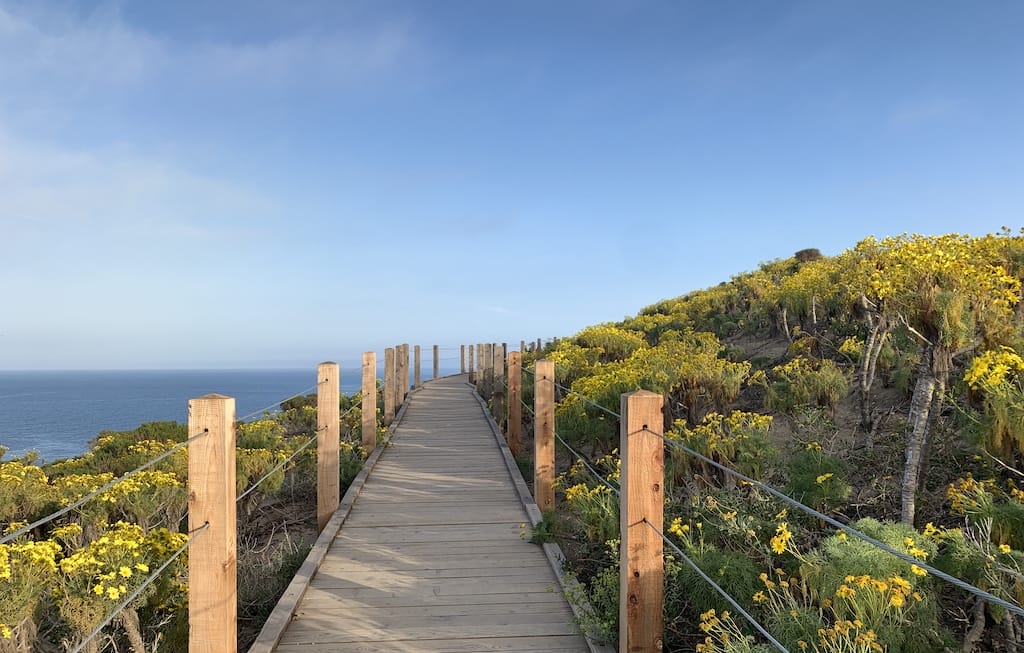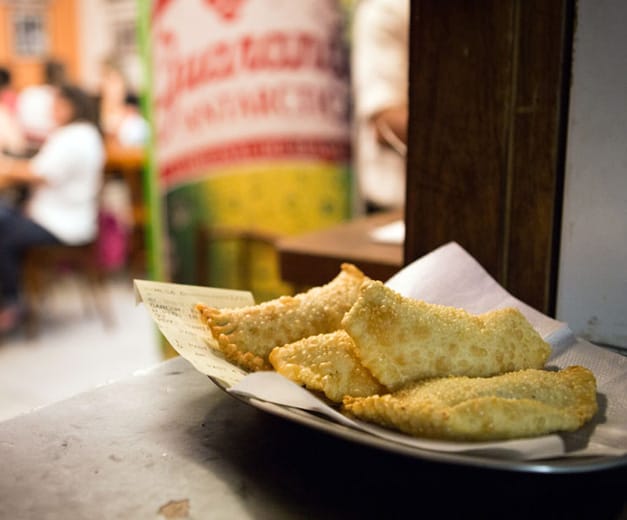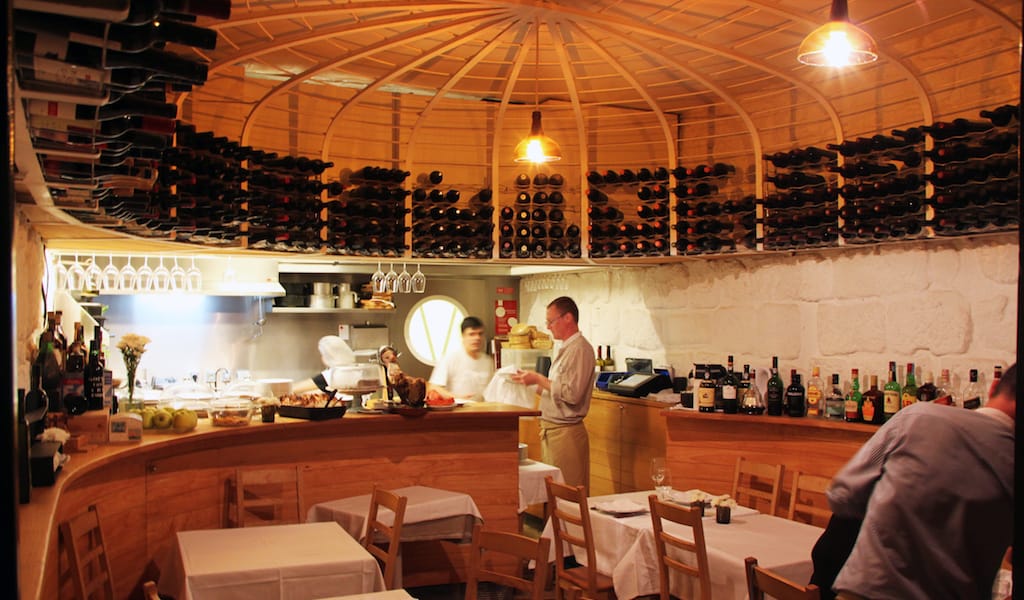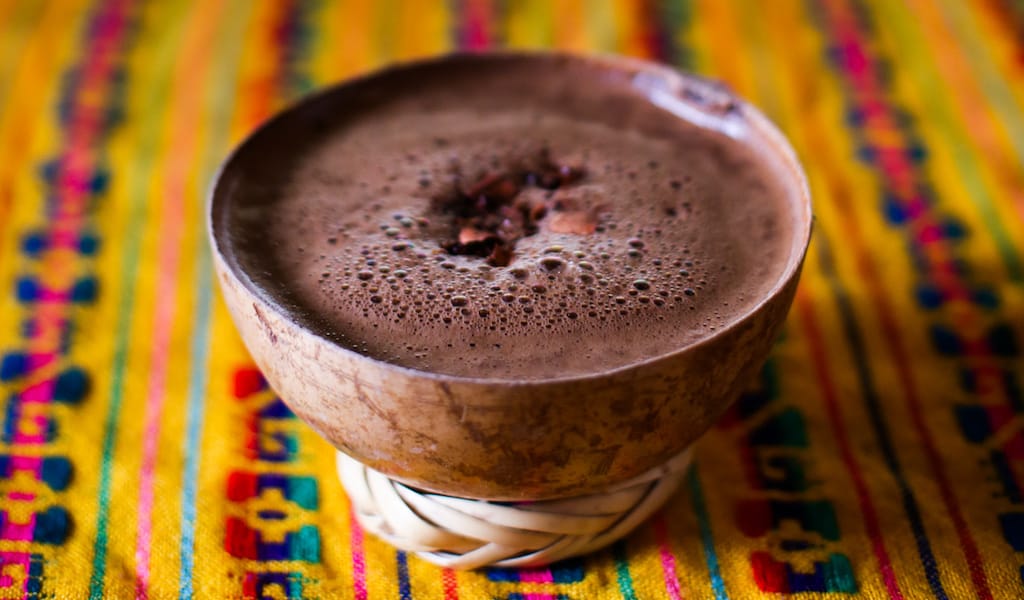Los Angeles winter is typically mild, sunny and dry (notwithstanding this past winter), so here it isn’t the warmer weather we await for every spring. Still, for a multitude of reasons, spring is a season many Angelenos celebrate. For me, spring signals the arrival of wildflowers and the beginning of spot prawn season, two uniquely Californian events that I anticipate each year.
As California’s official state flower, the poppy flowers in Antelope Valley are the most popular wildflowers, but the poppy reserve tends to be way too crowded – especially on superbloom years. I like to head to Malibu instead for my wildflowers. The drive north along the ocean on Pacific Coast Highway is one of the most beautiful in L.A. – we could even already see some wildflowers along the way.

Before our hike, we stopped by Malibu Seafood, a locals’ favorite that opened in 1972. Malibu Seafood is a fish market and restaurant that was founded by local fishermen. It’s still a popular spot even after all these years, especially on weekends, but I was lucky enough to get the last parking spot in the lot. The same fresh seafood that’s sold at the market can be ordered fried, grilled or steamed. After ordering our food inside the fish market, we were handed a buzzer and waited for our food. There are three patios available for dining, one of them covered. After getting our food from the pick-up window, we grabbed one of the wooden benches on the uncovered patio.

Depending on what you order, the prices here are quite affordable. I went with one of my go-to plates, the deep-fried oysters which cost $6.50 for five pieces. They were plump, the batter nice and crunchy, and served with tartar sauce. My friend and I also got some grilled scallops to share. All of the seafood here is prepared simply and comes with salad or fries. Everything is served on paper plates – it’s truly a no-frills stop that’s made even better with the ocean breeze.

After lunch, we continued another five miles to Point Dume Natural Preserve. Point Dume is an explosion of yellow during this time of year, filled with blooming coreopsis. The yellow coreopsis are more commonly known as tickseed, which have large yellow flowers that bloom every spring. I like to bring visitors to the Point Dume Natural Preserve because it has an easy and well-maintained trail. The main part of the preserve is actually an ancient sand dune, which is the main reason why the state has installed the boardwalk and well-marked trails, so that visitors can stay on the trail in order to preserve the dune. The preserve sits on a bluff that juts out into the water, offering beautiful ocean views throughout the trail. In terms of efforts-to-rewards ratio, this hike is one of the best, especially in the spring.

Parking right in front of Point Dume is very limited and the closest residential streets don’t allow parking, so, as usual, we ended up parking about five blocks away. But that’s all right; after all, we are here to hike. The Point Dume hike is actually more of a walk – it’s quite easy and there’s a boardwalk for a good portion of the trail, with the Pacific Ocean on one side and vibrant yellow wildflowers on the other. The trail is only about 1.5 miles but we spent some time taking a lot of photos of the wildflowers. Towards the south side of the trail you can also see sea lions near the water, and just around the bend you can see Pirate’s Cove Beach down below. There’s also a rock wall that spans from the bluff trail down to the beach, where, on most days, you can watch rock climbers scale up and down.
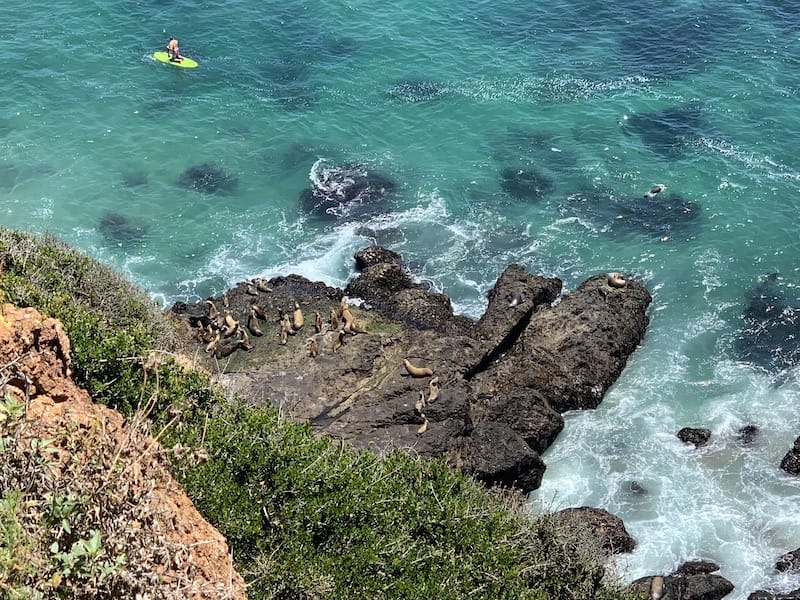
After we finished taking in all those wildflower and ocean views, we walked back to the car to head for an early dinner. Our goal: to get spot prawns at Water Grill. I quickly changed out of my hiking clothes and into to something a bit more presentable; Water Grill is another long-running seafood restaurant in Los Angeles, but this one is fine dining. The original location opened downtown in 1989 but has since expanded to seven locations, including one in Santa Monica, which is on the way home from Malibu for most Angelenos. Even though the restaurant doesn’t receive as much attention as it used to, this stalwart still serves very high-quality seafood, done well. And while it isn’t cheap by any means, Water Grill is our go-to for one the best deals on live Santa Barbara spot prawns in town.
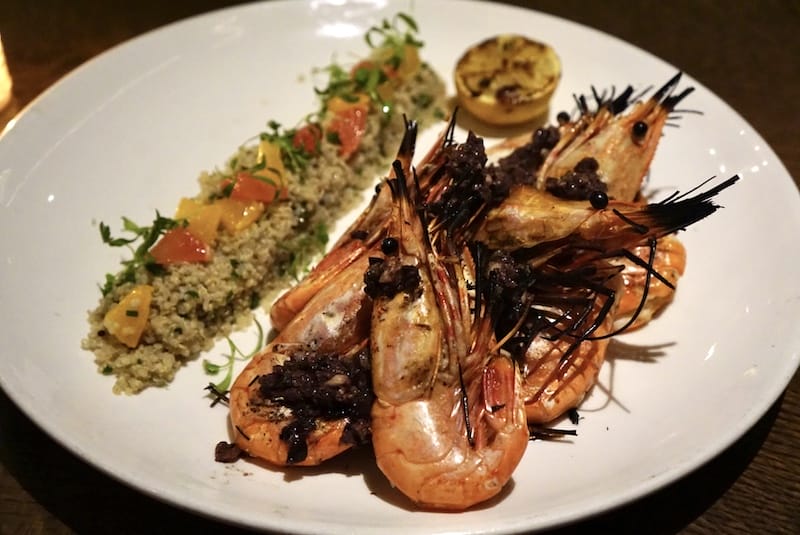
Spot prawns, for those unfamiliar, are the largest shrimp found on the west coast of the United States (yes, they are technically shrimp, not prawn). They are actually exclusively found in the Pacific Ocean from the Gulf of Alaska down to the northern part of Baja California, but some of the best spot prawns are caught off the coast of Santa Barbara. To sustainably harvest spot prawns is labor intensive and done in limited amounts, so even during the season, they are not always available. I certainly try to order them when I can, even though they’re a splurge. When cooked properly, spot prawns have a more delicate texture than shrimp, and are sweet and buttery like lobster. In Southern California, the spot prawn season starts in early spring and runs through the summer.
The spot prawns at Water Grill are sold at market price but the entrée usually runs around $60-65 for 1 pound which, in this instance, comes with eight jumbo spot prawns. Spot prawns become mushy when not handled properly, so they must be eaten fresh. At Water Grill, the spot prawns are kept live in a saltwater tank and are grilled just right so that they’re still bouncy and buttery. They’re served with a black olive tapenade, which works well with the sweet flavor of the shrimp, alongside toasted quinoa and citrus salad. We shared a plate of the spot prawns, enjoying every bite and making sure to get the roe that we found in some of the prawn heads. With night fully upon us, we drove home satisfied with a day filled with the best seafood and beautiful views, appreciating life in Los Angeles.
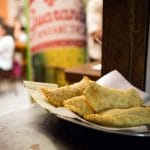 December 18, 2013 Best Bites of 2013
December 18, 2013 Best Bites of 2013
Editor’s note: This post is the third installment of “Best Bites of 2013,” a roundup of […] Posted in Rio June 29, 2019 Taberna dos Mercadores
June 29, 2019 Taberna dos Mercadores
Seating around only 20 people, Taberna dos Mercadores is a microcosmic reflection of […] Posted in Porto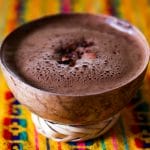 February 13, 2023 Chocolate Macondo
February 13, 2023 Chocolate Macondo
Initially, it was books that led Fernando Rodriguez Delgado to his interest in cacao. […] Posted in Mexico City
Published on April 21, 2023
Related stories
December 18, 2013
RioEditor’s note: This post is the third installment of “Best Bites of 2013,” a roundup of our top culinary experiences over the last year. Stay tuned for “Best Bites” from all of the cities Culinary Backstreets covers. Bar do Adão There are so many good fillings – 65, in fact – for the pastéis, or…
June 29, 2019
PortoSeating around only 20 people, Taberna dos Mercadores is a microcosmic reflection of contemporary Porto: a mixture of high-concept design and traditional food. From a design perspective, the focal point of the small yet comfortable dining room is the ceiling, where white metal supports create the outline of a false dome. Although sculptural in nature,…
February 13, 2023
Mexico City | By Susannah Rigg
Mexico CityInitially, it was books that led Fernando Rodriguez Delgado to his interest in cacao. Today Rodriguez runs Chocolate Macondo, a café that specializes in ancient preparations of cacao, but prior to that he was a bookseller, fanatical about reading and fascinated by the history of Mexico. The day that he came across the Florentine Codex,…







































